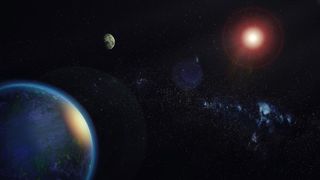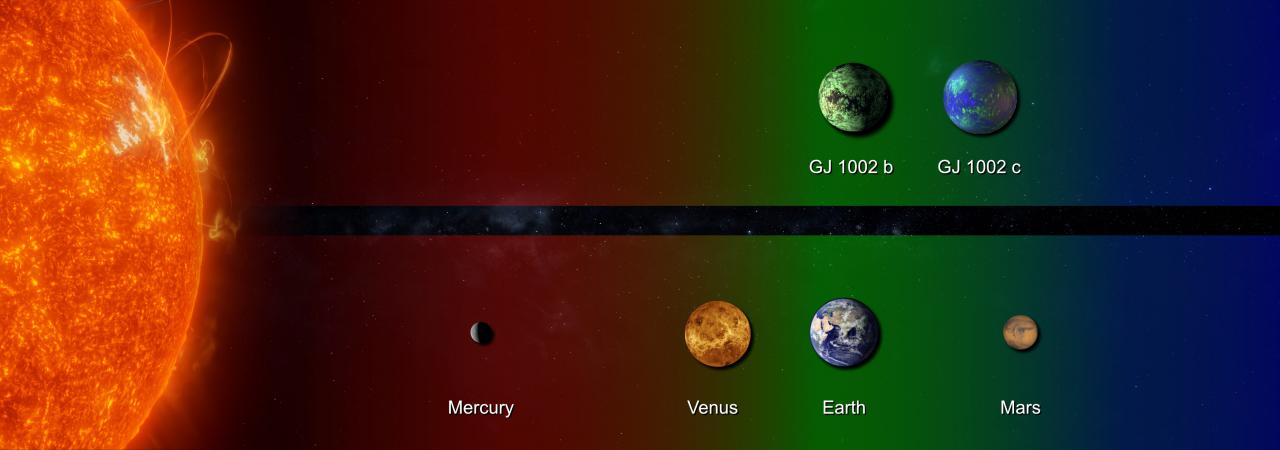Two potentially habitable Earth-like worlds orbit a star in our cosmic backyard

Astronomers have discovered two potentially habitable worlds orbiting a red dwarf star in our cosmic backyard. The extra-solar planets or “exoplanets” are located just 16 light-years away and have masses similar to that of our planet.
They are located in the ‘habitable zone’ of their star, GJ 1002, defined as the shell around a star that is neither too hot nor too cold to support liquid water, a vital ingredient for life.
“Nature seems bent on showing us that Earth-like planets are very common,” study author Alejandro Suárez Mascareño of the Instituto de Astrofisica de Canarias (IAC) said in a statement (opens in new tab). “With these two we now know seven in planetary systems quite near to the sun.”
Two ‘nearby’ exoplanets may be water worlds, Hubble and Spitzer data suggests
Because liquid water is essential for life to exist, planets in habitable zones are the focus of our search for life elsewhere in the universe, though just being in a habitable zone is no guarantee of being able to support life. For example, in the solar system both Venus and Mars are in the sun’s habitable zone yet neither could currently support life.
Because GJ 1002 is a relatively cool red dwarf, its habitable zone — and these two new exoplanets — are much closer to it than Earth is to the sun. The innermost planet, designated GJ 1002b, takes just around 10 days to orbit the star while the outer planet, GJ 1002c, completes an orbit in 21 days.

“GJ 1002 is a red dwarf star, with barely one-eighth the mass of the sun,” study co-author and IAC researcher, Vera María Passegger, said in the statement. “It is quite a cool, faint star. This means that its habitability zone is very close to the star.”
The proximity of both planets to Earth means that they could be excellent targets for astronomers aiming to study the atmospheres of Earth-like worlds outside the solar system.
The exoplanets were discovered as the result of a collaboration between the European Southern Observatory (ESO) instrument ESPRESSO (Echelle SPectrograph for Rocky Exoplanets and Stable Spectroscopic Observations) installed at the Very Large Telescope (VLT) in the Atacama desert region of Northern Chile, and CARMENES (Calar Alto high-Resolution search for M dwarfs with Exoearths with Near-infrared and optical Échelle Spectrographs) at the Calar Alto Observatory in Andalucía, Southern Spain.
The two instruments observed the planets’ parent star during two separate periods, CARMENES studied GJ 1002 between 2017 and 2019, while ESPRESSO collected data from the red dwarf between 2019 and 2021.
CARMENES’ sensitivity over a wide range of near-infrared wavelengths makes it well-suited to detecting variations in the velocities of stars that can indicate orbiting planets.
“Because of its low temperature the visible light from GJ 1002 is too faint to measure its variations in velocity with the majority of spectrographs” a researcher at the Institute of Space Sciences (ICE-CSIC), Ignasi Ribas, explained.
While ESPRESSO and the light-gathering power of the VLT allowed astronomers to make observations of the system that wouldn’t have been possible with any other Earth-based telescope, it was the combination of these two powerful instruments that delivered results which in isolation would have struggled to achieve and lead to the discovery of these exoplanets.
“Either of the two groups would have had many difficulties if they had tackled this work independently,” concluded Suárez Mascareño. “Jointly we have been able to get much further than we would have done acting independently.”